HyunJae Lee
Bayesian Optimization Meets Self-Distillation
Apr 25, 2023



Abstract:Bayesian optimization (BO) has contributed greatly to improving model performance by suggesting promising hyperparameter configurations iteratively based on observations from multiple training trials. However, only partial knowledge (i.e., the measured performances of trained models and their hyperparameter configurations) from previous trials is transferred. On the other hand, Self-Distillation (SD) only transfers partial knowledge learned by the task model itself. To fully leverage the various knowledge gained from all training trials, we propose the BOSS framework, which combines BO and SD. BOSS suggests promising hyperparameter configurations through BO and carefully selects pre-trained models from previous trials for SD, which are otherwise abandoned in the conventional BO process. BOSS achieves significantly better performance than both BO and SD in a wide range of tasks including general image classification, learning with noisy labels, semi-supervised learning, and medical image analysis tasks.
Improving Multi-fidelity Optimization with a Recurring Learning Rate for Hyperparameter Tuning
Sep 26, 2022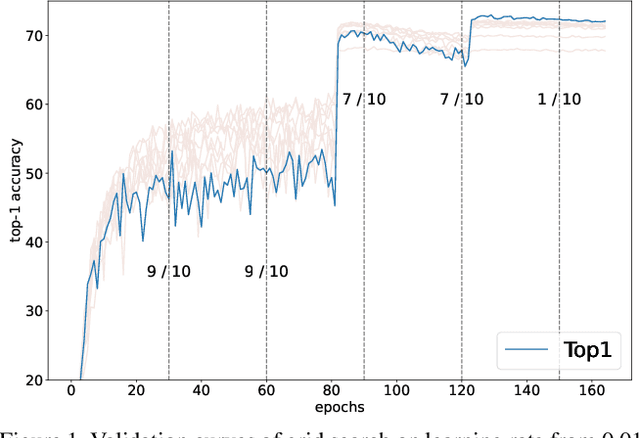
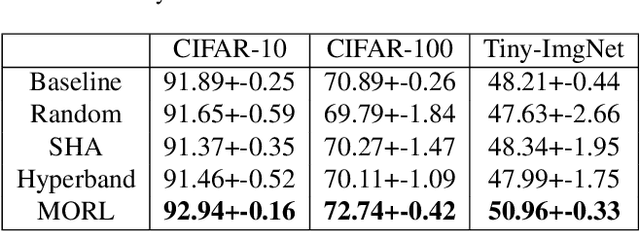
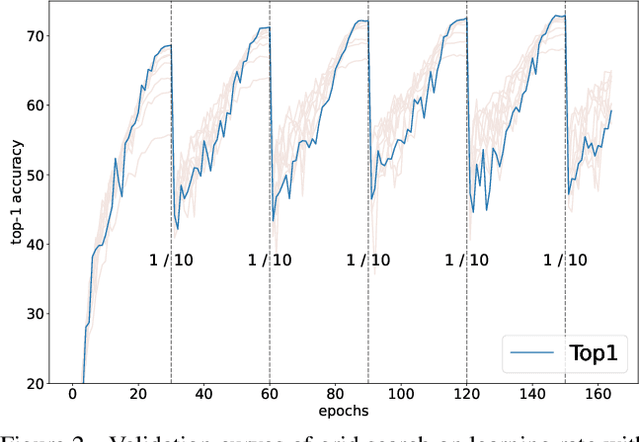

Abstract:Despite the evolution of Convolutional Neural Networks (CNNs), their performance is surprisingly dependent on the choice of hyperparameters. However, it remains challenging to efficiently explore large hyperparameter search space due to the long training times of modern CNNs. Multi-fidelity optimization enables the exploration of more hyperparameter configurations given budget by early termination of unpromising configurations. However, it often results in selecting a sub-optimal configuration as training with the high-performing configuration typically converges slowly in an early phase. In this paper, we propose Multi-fidelity Optimization with a Recurring Learning rate (MORL) which incorporates CNNs' optimization process into multi-fidelity optimization. MORL alleviates the problem of slow-starter and achieves a more precise low-fidelity approximation. Our comprehensive experiments on general image classification, transfer learning, and semi-supervised learning demonstrate the effectiveness of MORL over other multi-fidelity optimization methods such as Successive Halving Algorithm (SHA) and Hyperband. Furthermore, it achieves significant performance improvements over hand-tuned hyperparameter configuration within a practical budget.
Reducing Domain Gap via Style-Agnostic Networks
Oct 25, 2019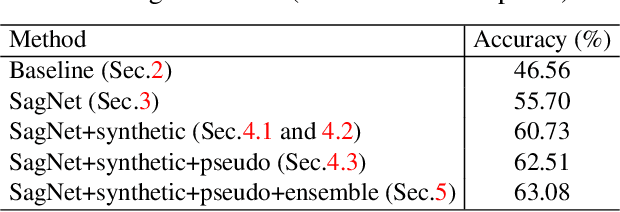
Abstract:Deep learning models often fail to maintain their performance on new test domains. This problem has been regarded as a critical limitation of deep learning for real-world applications. One of the main causes of this vulnerability to domain changes is that the model tends to be biased to image styles (i.e. textures). To tackle this problem, we propose Style-Agnostic Networks (SagNets) to encourage the model to focus more on image contents (i.e. shapes) shared across domains but ignore image styles. SagNets consist of three novel techniques: style adversarial learning, style blending and style consistency learning, each of which prevents the model from making decisions based upon style information. In collaboration with a few additional training techniques and an ensemble of several model variants, the proposed method won the 1st place in the semi-supervised domain adaptation task of the Visual Domain Adaptation 2019 (VisDA-2019) Challenge.
SRM : A Style-based Recalibration Module for Convolutional Neural Networks
Mar 26, 2019
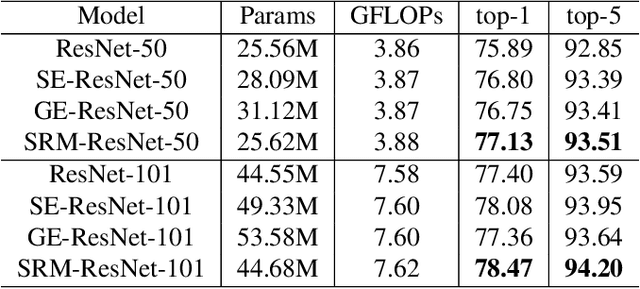
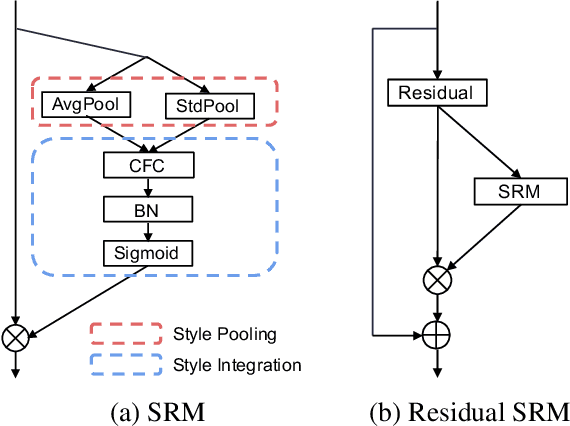
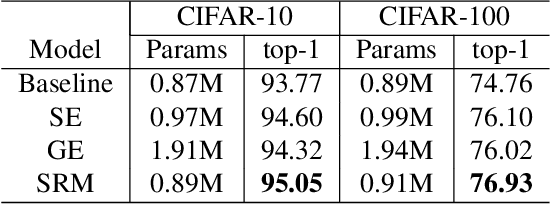
Abstract:Following the advance of style transfer with Convolutional Neural Networks (CNNs), the role of styles in CNNs has drawn growing attention from a broader perspective. In this paper, we aim to fully leverage the potential of styles to improve the performance of CNNs in general vision tasks. We propose a Style-based Recalibration Module (SRM), a simple yet effective architectural unit, which adaptively recalibrates intermediate feature maps by exploiting their styles. SRM first extracts the style information from each channel of the feature maps by style pooling, then estimates per-channel recalibration weight via channel-independent style integration. By incorporating the relative importance of individual styles into feature maps, SRM effectively enhances the representational ability of a CNN. The proposed module is directly fed into existing CNN architectures with negligible overhead. We conduct comprehensive experiments on general image recognition as well as tasks related to styles, which verify the benefit of SRM over recent approaches such as Squeeze-and-Excitation (SE). To explain the inherent difference between SRM and SE, we provide an in-depth comparison of their representational properties.
 Add to Chrome
Add to Chrome Add to Firefox
Add to Firefox Add to Edge
Add to Edge